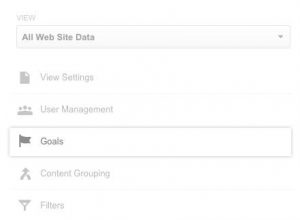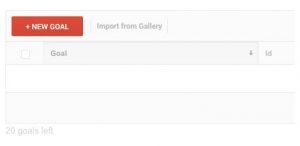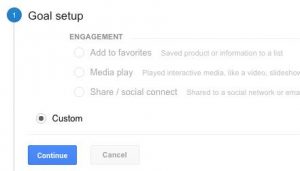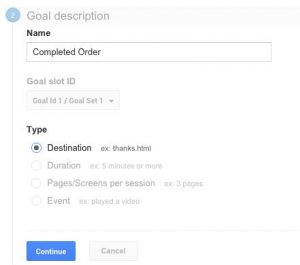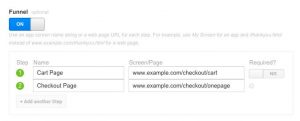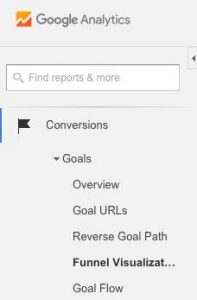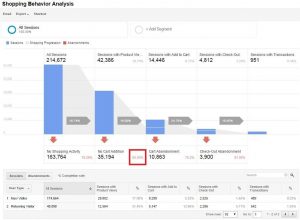Google Analytics is an ultimate solution by Google to help you on almost every issue of your store. From website traffic, Adwords, Search engine optimize to even conversion rate optimization, you can see the use of Google Analytics everywhere.
In this article, we will see how can you set a conversion funnel on Google Analytics. This will not only help you to know how and when visitors bounce from your store but also let you measure the rate of cart abandonment in a time period.
Funnel and the Goal
To track the shopping cart abandonment on your store, you will need to set up two reports for your store:
- A Goal and
- A funnel
Goal
The goal is typically an URL, page, time, or CTA where you want your customers to visit or click and you have a conversion objective with that goal.
For example, here our aim is to track the shopping cart abandonment so we will add the goal as the “Thank You page” or so-called “order confirmation page”. If the visitors reach to the thank you page, it means he/she has completed the purchase process and you have a successful conversion now. So the objective is see if a customer reaches to this page.
Funnel
A funnel is a path that the visitors take to reach the goal.
For example, not every visitor who exits your site without a purchase is a cart abandoner. Only those customers will be considered for shopping cart abandonment tracking who add a product to the cart and leave the site without checking out. So our funnel will include the pages like “cart page” and “checkout page”.
Google Analytics: Set up the Shopping cart funnel
Step 1: Sign in to your Google Analytics account.
Step 2: After logging in, click on the Admin tab
Step 3: Select your profile and Click on the Goals
Step 4: Click on the +NEW GOAL button to set a new goal.
Step 5: In Goal Setup select Custom and click on the Continue button.
Step 6: On the next page, you will be asked to set up your Goal Description and Goal Type.
Here we are setting up the goal for our order success page, so I will Name it as “Completed Order”.
I will choose the Type as the “Destination” as it’s an URL that I want to add.
Click Continue after making the set up as explained.
Step 7: On next page, you will need to enter the URL of your destination. Since we want to add the order success page in the destination, we will enter its URL in the same.
Please note: If your thank you page’s URL is static and does not contains dynamic values, keep it as “Equals to”. While if your URL contains a dynamic value at the end, you should select “ Begins With” option.
Use destination Equals to if the URL is something like this:
“www.example.com/checkout/thankyou”
Use destination Begins With if URL is something like this:
“www.example.com/checkout/thankyouid=12234”
Step 8: Now, turn on the Funnel option. Here you will need to enter all the URLs or steps that lead the customer to the Thank You page. Enter all the intermediate steps/URL starting from the Shopping cart till the thank you page.
Set the “Required” option for the first URL in the funnel as “NO”.
You would probably need to make a test purchase on your store and note down every important URL you want to track from in the process. For the time being, I am adding these two dummy URLs:
- Cart page (URL-example.com/checkout/cart/)
- Checkout page (URL-example.com/checkout/onepage/)
Step 9: After adding all the URLs in the funnel, click “Save” to save your new goal.
Step 10: Google Analytics will start collecting the data for your sale funnel over the next 24 hours.
Step 11: To view your funnel report, go to “Conversions” tab and then Goals>>Funnel Visualization.
The funnel visualization will look something like this as per your funnel set up:
An easy solution
Google Analytics always has a treasure of information for your eCommerce store. However, it’s not that easy to setup the right tracking environments. Especially when you not proficient with it, it will give you a hard time even reading the reports. With experience, you will become a proficient user and Google Analytics will flow like butter for you.
Google analytics definitely makes the process of tracking and finding the bottlenecks of your conversion funnel effortless. However, the job is not done yet. Churning the data and converting these abandoners into paying customers is your responsibility?
How to convert the abandoned cart into leads?
According to experts and Analytic toolmakers, “If your shopping cart abandonment rate is X%, you are not actually losing X% of your sales”. If you make a closer analysis, you’ll see that actually only the 30%-40% of the abandoning customers come to your site with a buying intention. So, you can atleast achieve these many conversions if not 100%. Discussed below are some quick-fixes that can help you take care of the abandoned carts.
Find the exact pitfalls
The Google analytic provides a greater insight of the abandonment behavior of the store visitors. In addition to the numbers, you can figure out the exact place from where they left your site. Dig a bit deeper and see for the places of the site that are having higher bounce rates. Check the aspects at those areas that are not motivating the visitors to go further. Take the shoppers before they leave the door. Optimize the pain areas for your customers and make them stay for longer.
Go for retargeting
The retargeting methods like email marketing, push notification, SMSs and others might sound conventional, but is an effective way to bring the prospective customers back to the store. Sending personalized emails and regular follow-ups has helped a lot of stores achieve their target. Instead of sticking to the generic format of the email, send their personalized mails.
Offer reasons for conversion
See the products that the visitors have saved in their cart and offer them discounts on that particular products. Push notifications can really help if you are using eCommerce mobile apps. Notify them whenever their cart is on sale. This can give them compelling reasons to return to your store and place the orders.
Boost the session time
It is no news that the more time the visitors spend on your site, the more will be the chances of conversion. This is when exit popups might help you. However, the exit popups are considered annoying by online shoppers. You can use some gamified popups at the exit-intent of the customers instead of the conventional popups. Knowband’s Spin and Win exit popup for Prestashop, Magento, Magento 2, OpenCart and WooCommerce are one of the ways to reduce the bounce rate of the site without annoying the customers.
For the time being, you might want to have a look at a more specialized and easier alternative to tracking the cart abandonments on your store. If so, Abandon cart extension for PrestaShop, Magento and OpenCart could be a great option for you. You might want to try the free demo of these extensions.
- This extension helps you to track all the abandoned carts on your store and automatically send cart serial reminders to the respective customers.
- This is not only an abandoned cart tracker but also an automatic abandoned cart recovery tool by using proper follows.
- The automatic follow ups will be done from time to time through email. These emails may consist of a simple plain reminder or an offer for the customer to encourage him to complete the checkout.
- There is also a direct checkout button the email that will automatically take the customer to the checkout page with all the products in the cart already added.
Check out the module description for more detail and free live demo.
Liked This? You’ll Like These Too
- A PrestaShop Module to Divert Abandoned Carts towards Conversions
- Checkout Module for Reducing Shopping Cart Abandonments and Better Conversions
- Get your abandoned customers back to your E- commerce store with this Prestashop Plugin
- PrestaShop Abandoned Cart Module for Higher Conversion on your PrestaShop Store
- Prestashop Abandoned Cart Serial Reminders – User Manual



